The e-Japan Journal is the electronic webletter of the Consulate-General of Japan in Chicago and the Japan Information Center (JIC). We hope it proves to be a useful, interesting, and exciting window for you into Japanese cultural activities happening throughout the Midwest. As always, your feedback, comments, and suggestions are encouraged and can be sent to our editor, Amy Klouse, at jic@cg.mofa.go.jp.
|
|
| This Month in Japan |
| Special Announcements |
|
| JIC Library |
|
| Fun Features |
|
| Editor's Note |
|
| |
|
Highlighted
Cultural Events |
- November 19-January 1: Christmas Around the World and Holidays of Light @ Museum of Science and Industry in Chicago, IL
- December 4: Asian Pop-Up Cinema featuring Poison Berry in My Brain
- December 5: Holiday Ikebana Series with Ikebana on Halsted
- December 9: "Opportunity Japan" with the Japan America Society of Indiana
- December 12: Mochitsuki rice pounding with the Midwest Buddhist Temple in Chicago
- December 12: 88th Birthday Party for Miss Mie, Japanese Friendship Doll, @ Univ. of Nebraska
- December 13: “Mottainai: Japan House Bazaar” with the Univ. of IL in Urbana-Champaign
- December 17: Shujitsu Junior & Senior High School Wind Ensemble at the Midwest Clinic Concert
- December 17-23: The Nutcraker Ballet, Choreographed by Gen Horiuchi, in St. Louis, MO (15 year anniversary!)
- December 18-20: Con Alt Delete Anime Convention in Rosemont, IL
- December 19: Winter Wonderfest - St. Matthews Lutheran Japanese Preschool performance @ 1:00 PM
- December 19: Reduction with Tsukasa Taiko @ Museum of Contemporary Art in Chicago, IL
- December 19 & 20: Legacy Twelve with Tsukasa Taiko @ Museum of Contemporary Art in Chicago, IL
- December 31: Joya no Kane Bell Tolling with the Japan America Society of Iowa in Des Moines, IA
Please click through to our Events Calendar for a full list of events, as well as information about events in the coming months!
|
| Economic News |
|
| |
| Political News |
|
| |
|
|
 Shiwasu, the traditional name for December, refers to teachers or priests rushing around hastily. This is because the teachers and priests at temples or shrines are busy preparing and cleaning for upcoming New Year celebrations.
Shiwasu, the traditional name for December, refers to teachers or priests rushing around hastily. This is because the teachers and priests at temples or shrines are busy preparing and cleaning for upcoming New Year celebrations.
The Emperor’s birthday, December 23, is the primary national holiday in Japan this month. His birthday is one of the only two occasions per year when the Imperial Grounds are open to the public. The end of year holidays on December 29, 30 and 31 that continue into the beginning of January (1-3) are also official national holidays for the purpose of enjoying the end of the year.
Bonenkai parties (or “year forgetting parties”) are often held in December with companies, organizations, families, and friends to forget the troubles and worries of the year.
 Return to top Return to top
|
|
|
The Emperor's birthday falls on December 23. Under the Japanese Constitution, the Emperor is the symbol of the state and the unity of the people. Emperor Akihito took the throne as the 125th Emperor of Japan in 1989. Members of the Imperial Family maintain wide contact with citizens across Japan, promote international friendship, and are involved in educational initiatives as well as activities for preserving the nation’s cultural traditions.
His birthday is one of two occasions in the year where the Imperial Grounds are open for public access. Please follow this link to learn more about Emperor Akihito and Japan's Imperial Family.
 Return to top Return to top
|
| Mitsukuni Baba, Executive Director of the Japan America Society of Chicago, selected as recipient of a Foreign Minister’s Commendation |
|
|
Mr. Mitsukuni Baba, Executive Director of the Japan America Society of Chicago was selected as a recipient of the Foreign Minister’s Commendations in Honor of the 70th Anniversary of the End of the War with the United States of America. He was selected for his contributions to the promotion of mutual understanding and friendship between Japan and the United States through planning and organizing Japan-related events.
About the Award:
- The Ministry of Foreign Affairs announces its decision to award the Foreign Minister’s Commendations in Honor of the 70th Anniversary of the End of the War with the United States of America to 28 individuals and 14 groups in recognition of their outstanding achievements in promoting of friendship between Japan and the United States of America.
- These individual and groups will be presented with Certificates of Commendations. For the individual awardees, the Ministry will also present commemorative gifts of pure silk furoshiki.
- The Embassy and the Consulate-Generals of Japan in the United States of America will hold an awarding ceremony to present the Certificates and gifts.
 Return to top Return to top
|
| Holidays the Consulate is Closed |
|
|
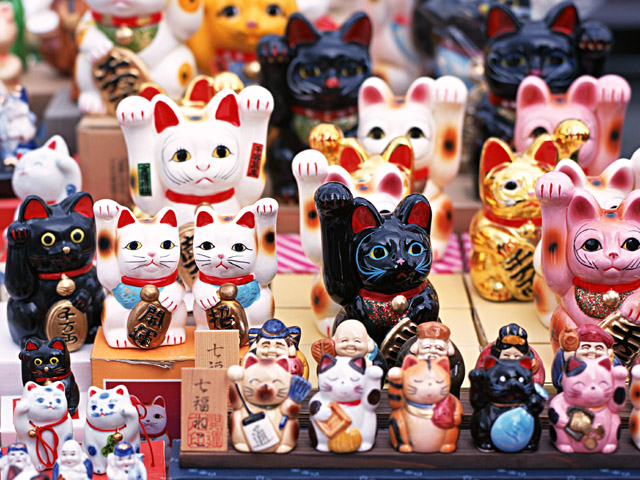 The Consulate will be closed the following days:
The Consulate will be closed the following days:
- December 23 (Emperor's Birthday)
- December 24 (Christmas Eve)
- December 25 (Chrismas Day)
- December 29 (End of Year Holiday)
- December 30 (End of Year Holiday)
- December 31 (New Year's Eve)
- January 1 (New Year's Day)
- January 18 (Martin Luther King Jr. Day)
Thank you for your understanding and please visit our website to see other days our offices are closed throughout the year.
 Return to top Return to top
|
| Part-time Staff Opening as JET Program Interview Assistant at the Consulate [Deadline 12/4] |
|
|
The Japan Information Center is hiring a part-time JET Program Interview Assistant for early January through late February. The primary responsibility of this position is to assist with JET Interviews (tentatively, February 1-6), but other responsibilities pertaining to the JET Program and JIC activities will also be assigned. The pay is $15 an hour for up to 210 hours. The work schedule is somewhat flexible, however, during the JET Interview Week, you must work full days.
Applicants must be alumni of the JET Program and have excellent organization and communication skills. Applicants must also be able to use Microsoft Word and Excel.
If interested, please send your resume to Austin Gilkeson at austin.gilkeson@cg.mofa.go.jp by Friday, December 4th. We will hold interviews for selected applicants the second week of December.
 Return to top Return to top
|
| 30th Annual Speech Contest: Calling All Japanese Language Heritage Learners! |
|
|
2015 Speech Contest Participants

|
The JIC's annual Japanese language speech contest will take place on March 26, 2015. A call for submissions has started for a new category this year: Japanese Language Heritage Learners! A heritage language learner is "a person studying a language who has some proficiency in or a cultural connection to that language through family, community, or country of origin. Heritage language learners have widely diverse levels of proficiency in the language (in terms of oral proficiency and literacy) and of connections to the language and culture. They are different in many ways from students studying the language as a foreign language." (excerpt from the Heritage Languages in America website)
Please read the Guidelines and check our website periodically for more information on submissions for all categories.
 Return to top Return to top
|
|
Tatsu Aoki
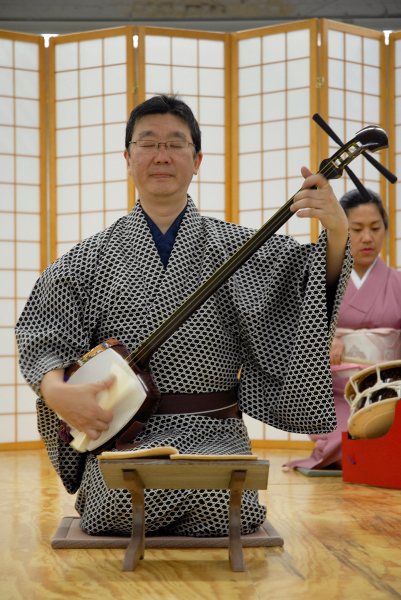
|
Welcome to the new interview section of the newsletter! This section was created so that readers can learn more about individuals in the Chicagoland area who promote Japanese culture through groups, organizations, and businesses. It is through their efforts that we learn more about Japan but oftentimes we do not know much about how their organization formed, what their mission is, about their personality, or in what ways their work contributes to the vibrancy of our city. My aim is to select individuals who have upcoming events during the newsletter month so that readers can learn more about the event itself as well as the person.
For this month, I interviewed Tatsu Aoki, an extremely talented musician, teacher, and film director who is preparing for the upcoming Taiko Legacy Twelve/Reduction (12/19 & 12/20) performances at the Museum of Contemporary Art in Chicago. Please read the full interview here as this is only a small portion of the interesting points we discussed!
AK: How long have you been doing Taiko Legacy and Reduction?
TA: Legacy is on its twelfth year now. It started out as an annual student recital but has evolved to become a presentation of our cultural belief. From around Taiko Legacy Five, it started to become more about my artistic statement with the group. There are two beautiful things: 1) The youth in our taiko community are helping carry this on and believe in the aesthetics and 2) It is an avenue to demonstrate what we believe. About three years ago when we celebrated the tenth anniversary, I created the special Reduction program. Reduction uses a different aesthetic that represents the Underground Music I talked about earlier in the interview using traditional drumming. The museum really liked it and it has been well attended so the program has continued. A lot of people come to both shows where they see both traditional and an alternative aesthetic to the art. For me, it makes perfect sense to do Taiko Legacy and its alternative Reduction as a pair of concepts and beauty as they try to express the same core aesthetics. Additionally, around the time that Legacy and Reduction will be showing at the MCA, one of my experimental films will be playing as well.
AK: How has Legacy changed over the years?
TA: I think over the years I became more specific about the aesthetics. The First – Fifth Legacy was more about showing our ability for community engagement. Now, I've already embraced the community with people who are interested in us. Anything after Five - Ten, I am much more specific. I look at the twenty-three and twenty-four year old ensemble players that started when they were eight. Both the kids and parents have sacrificed so much to participate in drumming and it is very moving. Over the last three, four years, my performers have become more focused so I adjusted my programming to utilize their talents to the fullest. I already have a solid group of professional drummers so it is not really about the group or finding others to follow, it is about how community people are engaged in our specifics about Japanese aesthetics. In Japanese, the word bitoku is a beauty that can educate you, benefit you, that can help you understand a little deeper. It is a type of virtue that I bring to Taiko Legacy and it has changed into that. We are dealing with very high caliber music right now that is still community art but our demand is high and our performers are living up to it.
AK:...There has been a history of assimilation in America and while this is changing, I am sure that children from immigrant parents want to be more like their peers and at times do not see the value in learning Japanese language, playing Japanese instruments, or things like that.
TA: Yes. I'm worried most about educating the core value, but I use taiko to explain because it is a part of Japanese identity. I'm not a politician or a scholar, so I try to do this through art. Taiko is a great example of how everything got messed up through institutionalization. I do not really like what is happening with modern taiko and our group is very active. This reminds me of an article I once read about the differences between Japanese and American businesses. The Japanese are always worried and insecure about their performance and the American concept is that everything is great. Modern taiko is always interested in hitting and my taiko aesthetics focuses on the parts in the music that you don't hit. The aesthetics is very similar to kabuki music, the parts that seemingly do not have much significance are the parts that drive the music. In order to understand it, you have to know the traditional Japanese music and the other Japanese arts. Understanding art forms like literature, painting, gardening, tea, etc. are also extremely important.
AK: Is there any kind of personal quote you'd like to share?
TA: I want people who are interested in creative things to "never quit looking for something that is not there." It is not practical to look for something that is not there but that is where the true art is.
I also believe that people in the modern world are more interested in what they want to do than what needs to be done. It is not really so much about what I want to do, because what I want to do is stay at home, read a book, sleep and eat. But what needs to be done to present this aesthetics we believe in must use taiko, dance, shamisen. People spend too much time debating and figuring out what they want to do. Cultural education is about what needs to be done to keep the original aesthetics intact so that this can be passed down or even rediscovered in the future.
As always, your feedback on the interview format, any interview candidate suggestions, or other aspects of the newsletter are always appreciated! Contact Amy.
 Return to top Return to top
|
| December 6: 2016 Japanese Language Proficiency Test (JLPT) @ DePaul University |
|
|
 Don't forget, the time has come for the Japanese Language Proficiency Test! Here are some last minute tips:
Don't forget, the time has come for the Japanese Language Proficiency Test! Here are some last minute tips:
Bring your ID, JLPT test voucher, plenty of pencils and erasers, a silent wristwatch, and some snacks to keep yourself energized between sections. Be sure to arrive early...better than running late and not having enough time to take the test. Although you may want to do some last minute studying, make sure to get plenty of rest the night before.
Good luck! If you want to take the test next year, find out more information on the JLPT here.
 Return to top Return to top
|
| December 8: Japanese Picture Book Reading Group @ JIC |
|
|
A group of parents and children gather monthly in the JIC to promote reading Japanese books together! The focus is mostly on elementary picture books and it is requested that all who wish to participate bring one of their favorite (or their child's favorite!) books with them to the meeting. You may also bring in light snacks and drinks for children to enjoy.
More information regarding details like parking is outlined when accessing the link below.
| Date and Time |
Location |
Information |
December 8 (Tues)
10:30 AM-1:00 PM |
Japan Information Center
737 North Michigan Avenue, Suite 1000
Chicago, IL 60611 |
Reading Group Flyer
|
 Return to top Return to top
|
| December Midwest Bonenkai |
|
|
Bonenkai parties galore! Below are the upcoming dates and times for some Bonenkai taking place within our jurisdicition:
Japan America Society of Chicago
| Date and Time |
Location |
Information |
December 10 (Thurs)
5:30 - 9:30 PM |
Union League Club of Chicago
65 West Jackson Boulevard
Chicago, IL 60604 |
Event Website
|
Japan America Society of Iowa
| Date and Time |
Location |
Information |
December 12 (Sat)
1:00 - 3:00 PM |
Franklin Public Library
5000 Franklin Avenue
Des Moines, IA 50310 |
Newsletter Blast
|
Heart of America Japan America Society
Japan America Society of Minnesota
| Date and Time |
Location |
Information |
December 15 (Tues)
6:30 - 8:30 PM |
Sakura Restaurant and Bar
350 St. Peter Street
St. Paul, MN 55102 |
Event Website
|
 Return to top Return to top
|
| **Event** October 30-February 6: "Japanese Design Today 100" Japan Foundation Exhibit on display at the Milwaukee Institute of Art and Design |
|
|
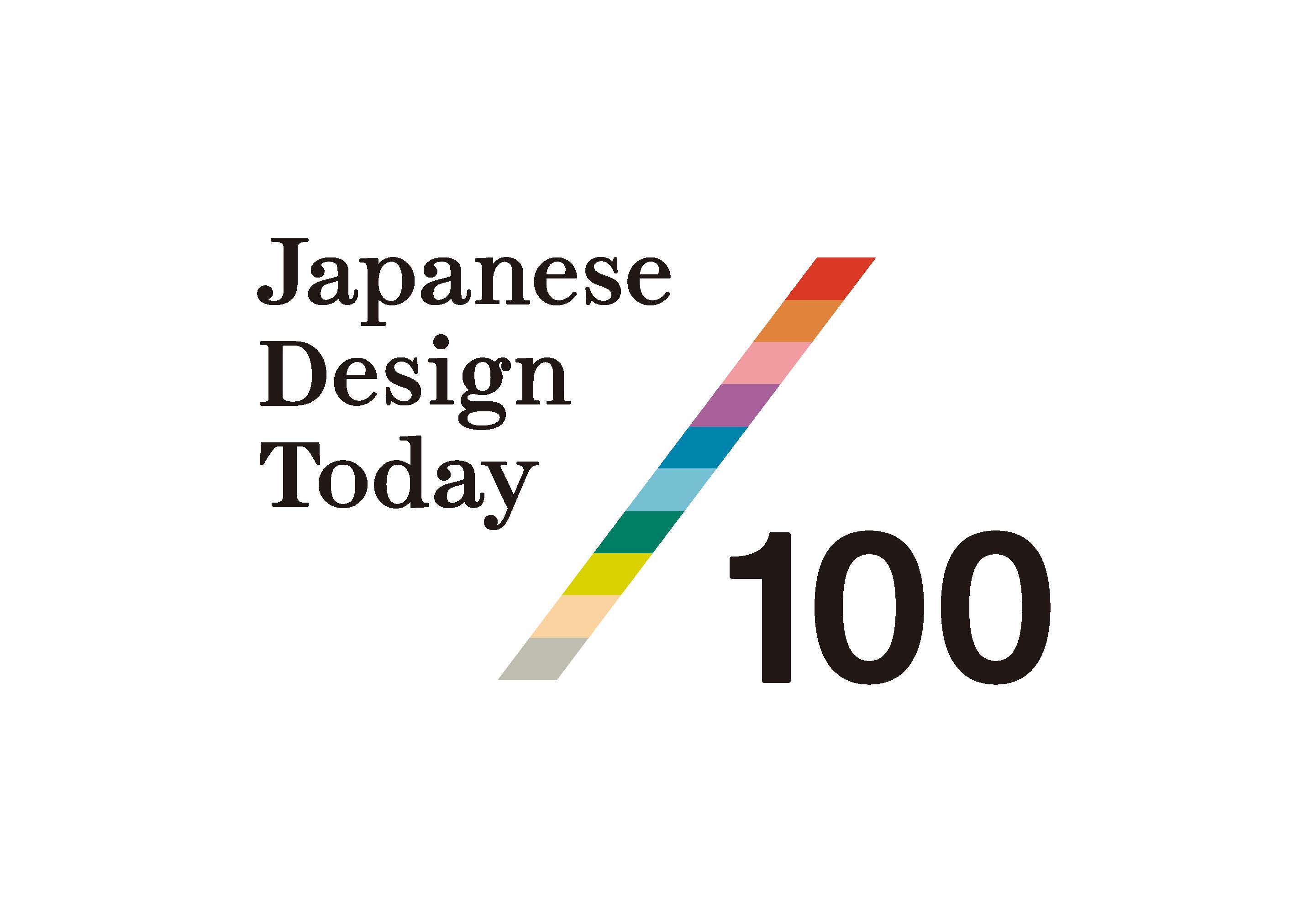 The Japan Foundation, the Milwaukee Institute of Art and Design (MIAD), and the Consulate-General of Japan in Chicago are excited to announce "Japanese Design Today 100," a world-touring exhibition, will be on display in MIAD's Brooks Stevens Gallery from October 30, 2015 - February 6, 2016.
The Japan Foundation, the Milwaukee Institute of Art and Design (MIAD), and the Consulate-General of Japan in Chicago are excited to announce "Japanese Design Today 100," a world-touring exhibition, will be on display in MIAD's Brooks Stevens Gallery from October 30, 2015 - February 6, 2016.
TENUKORE
 |
Everyday products can offer tremendous insight into a culture, providing a glimpse of what everyday life may entail. The "Japanese Design Today 100" traveling exhibition allows viewers to explore 100 works that represent Japanese product design, ranging from innovative designs to those that are more modern.
These designs feature 100 objects, 89 that were created since 2010, as well as 11 objects that represent Japanese post-war modern product design. These designs can be separated into 10 categories: classic Japanese design, furniture and housewares, tableware and cookware, apparel and accessories, children, stationery, hobbies, healthcare, disaster relief and transportation.
Biography of Design Director Mr. Shu Hagiwara, a curator of the exhibit:
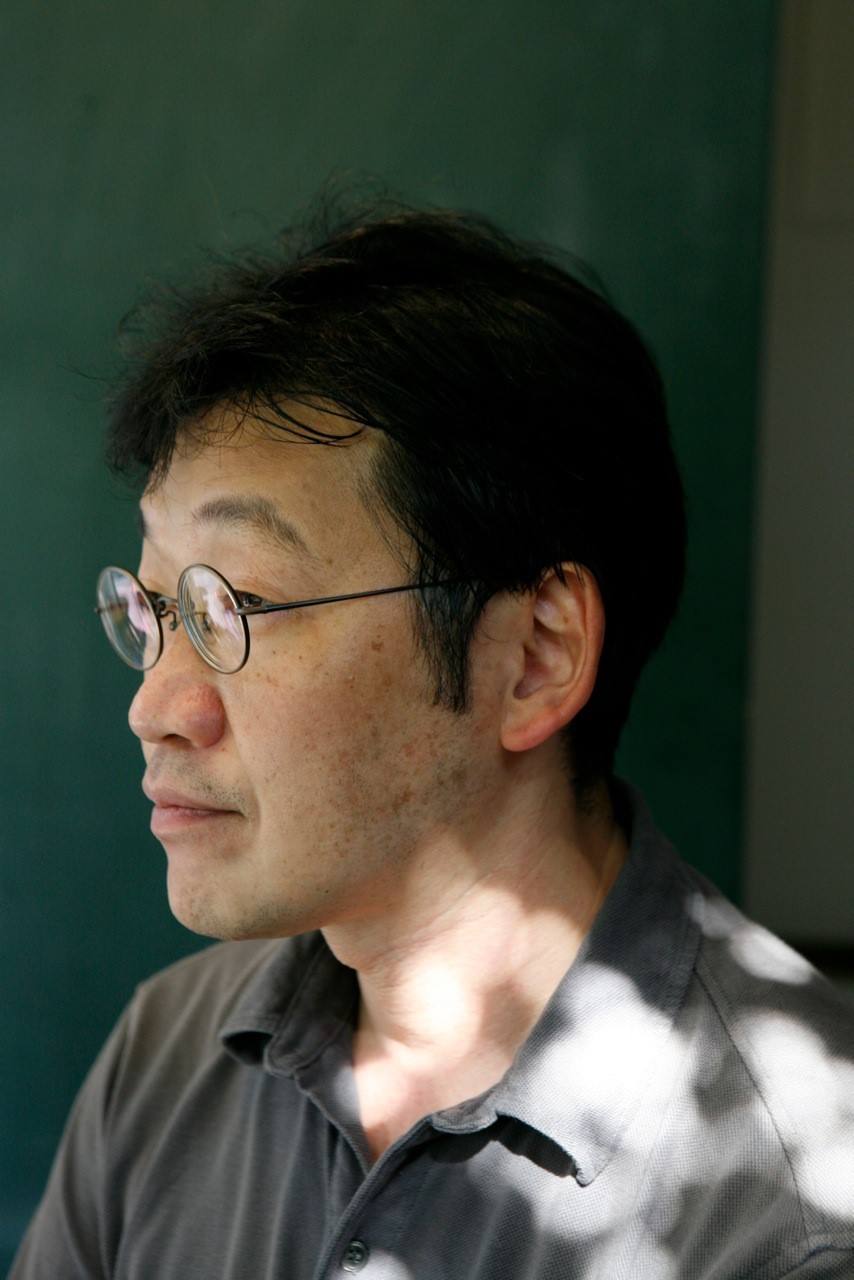 Shu Hagiwara was born in 1961. He graduated from Musashino Art University’s Visual Communication Design Department and was employed at Dai Nippon Printing and Living Design Center OZONE until he began working independently in 2004. He has started and maintains several original projects including the stores KAMI NO KOUSAKUJO, Codo mono Coto, Chuo Line Design Network, Kunitachi Honten, Nishi-ogi Shiten, Kokubunji Sanchi, TENUKORE, and KAMIMINO. Books he has authored include Nine Tsubo House and Design Stance. He currently is the shopkeeper of TSUKUSHI Stationery, a representative of the public company SHUHENKA, and a professor in the Design Department at Meisei University in Tokyo. http://www.shuhenka.net/
Shu Hagiwara was born in 1961. He graduated from Musashino Art University’s Visual Communication Design Department and was employed at Dai Nippon Printing and Living Design Center OZONE until he began working independently in 2004. He has started and maintains several original projects including the stores KAMI NO KOUSAKUJO, Codo mono Coto, Chuo Line Design Network, Kunitachi Honten, Nishi-ogi Shiten, Kokubunji Sanchi, TENUKORE, and KAMIMINO. Books he has authored include Nine Tsubo House and Design Stance. He currently is the shopkeeper of TSUKUSHI Stationery, a representative of the public company SHUHENKA, and a professor in the Design Department at Meisei University in Tokyo. http://www.shuhenka.net/
| Dates |
Location |
Information |
| October 30, 2015 - February 6, 2016 |
Brooks Steven's Gallery of Industrial Design
Milwaukee Institute of Art and Design
273 East Erie Street
Milwaukee, WI 53202 |
Facebook Event |
 Return to top Return to top
|
| Other Scholarships and Programs |
|
|
|
|
|
 |
|
|
| This month's Highlighted Resources was written by JIC Librarian Ella McCann and features a notable library item we are recommending this month. |
| --------------------------------------------------------------------------------------------------------------------------------------------- |

“In Japan, it is said that giving a gift is like wrapping one’s heart.” -Kunio Ekiguchi, Author.
The holiday season has begun and that means that gifts of all shapes and sizes will be exchanged. In Japan, they are given when the seasons change (o-chuugen in summer and o-seibo in winter), when someone returns from a trip or because someone returned a lost item to its rightful owner. When it comes to the holidays, the wrapping on the gift is just as important as the gift itself. To help introduce some new ways to present gifts this year, I have chosen Gift Wrapping: Creative Ideas from Japan, by Kunio Ekiguchi (Call number 133007) for this month’s selection.
Ekiguchi begins the book with an introduction to the significance of wrapping in Japan. Known as Tsutsumi, the idea extends from gods to gifts. Traditionally in Japan, gods are wrapped in an altar and carried around during festivals. The items given to the gods often have a special type of paper and style so that they may be properly received. From there, he goes on to explain the numerous ways in which items are wrapped in Japan. I was surprised to learn that there are even terms used to explain the wrapping of combs (kushi-zutsumi), chopsticks (hashi-tsutsumi) and incense (kou-zutsumi)!
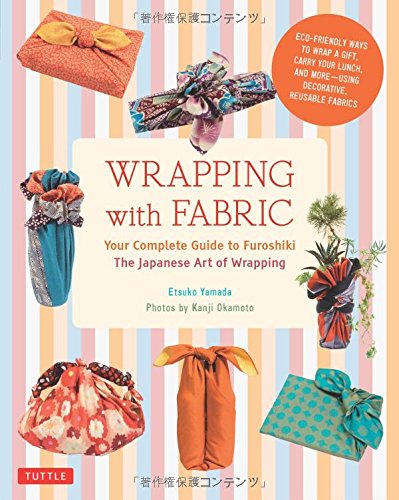 Throughout the book there are drawings and images that give clear examples of how to wrap various items. The instructions are easy to follow and there are lots of ways to be creative and adapt the instructions to your liking. The author also explains the important role seasons play in design. For example, in the winter when it is cold, one should use warmer colored paper for a gift and in the summer, cooler colors to ward off the heat. The design may even include a flower or leaf representative of that season.
Throughout the book there are drawings and images that give clear examples of how to wrap various items. The instructions are easy to follow and there are lots of ways to be creative and adapt the instructions to your liking. The author also explains the important role seasons play in design. For example, in the winter when it is cold, one should use warmer colored paper for a gift and in the summer, cooler colors to ward off the heat. The design may even include a flower or leaf representative of that season.
In this book the author mainly uses Washi, a special type of handmade Japanese paper, and ribbon. Washi can be found at many art stores and Japanese specialty stores. In addition, he also uses the last part of the book to explain the art of wrapping with Furoshiki, the Japanese cloth used for everything from lunch boxes to wine bottles. For more on Furoshiki, be sure to check out Wrapping with Fabric: Your Complete Guide to Furoshiki -The Japanese Art of Wrapping (Call number 140003).
With over 60 styles to choose from, you’re sure to find the right style for your present!
 Return to top Return to top
|
|
| New Additions, compiled by Ella McCann, showcases the latest materials we have received in the JIC collection. |
| ------------------------------------------------------------------------------------------------------------------------------------------------ |
|
| Title |
Author |
Language |
Call Number |
| Onigiri recipii 101: Everyday onigiri |
Yamada Reiko |
Japanese, English |
141055 |
| From the Fatherland, With Love |
Ryu Murakami |
English |
552430 |
| A True Novel, Book 1 |
Minae Mizumura |
English |
552438 |
| A True Novel, Book 2 |
Minae Mizumura |
English |
552439 |
| Hirarii to raisu 'Amerika o ugokasu onnatachi sugao' |
Moshimoto Yukiko |
Japanese |
434015 |
| Hippiri yomeigo |
Kenmochi Hiroko
Miyoshi Okasaka |
Japanese |
510147 |
| Kokusan maiko kukkingu |
Sakamoto Kana
Sakamoto Hiroko
|
Japanese |
141154 |
|
| DVD Title |
Author |
Language |
Call Number |
| Japan Video Topics 2015/2016 #1:
Kiriko Lantern Festivals of Noto, Haiku The Worlds Shortest Poem, Bluefin Tuna Aquaculture Completing the Farm-raising Cycle, Stamps and Seals For Business and for Fun
|
Ministry of Foreign Affairs, Japan |
English, French, Spanish, Arabic, Chinese, Portuguese, Japanese
|
JVT 2015/2016.01 |
| Japan Video Topics 2015/2016 #2: Harie A Community Centered on Water, Kaizen The Secret behind Japanese Productivity, Safer Japanese Methods for Deterring Insects, Uji Birthplace of Matcha Green Tea |
Ministry of Foreign Affairs, Japan |
English, French, Spanish, Arabic, Chinese, Portuguese, Japanese |
JVT 2015/2016.02 |
 Return to top Return to top
|
|
|
Here are some questions about current events in Japan. Email your answers to Amy Klouse at amy.klouse@cg.mofa.go.jp for a chance to win a small prize!
- Prime Minister Shinzo Abe along with other world leaders took part in what major conference that took place in Manila, Philippines this month?
- What well-known burger joint from New York opened in Tokyo this month? (Hint: we there are two of these stores in Chicago as well!)
- Which Japanese author won the Hans Christian Anderson Literature Award?
--------------------------
Congratulations to Mimi Brown, the winner from our November issue! Here are the answers: |
• Which Film Festival started this month in Japan?
Tokyo International Film Festival
• Researchers from Egypt, Japan, France, and Canada are taking part in what project that utilizes advanced technology to look inside ancient pyramids?
Scan Pyramids Project
• According to a Japan Pet Food Association survey, by the end of 2015, which animal will be the most popular to own?
Cats
 Return to top Return to top
|
| Website (Article!) Highlight |
|
|
 Eco-Towns in Japan: Implications and Lessons for Developing Countries Eco-Towns in Japan: Implications and Lessons for Developing Countries
Have you heard of Eco-Towns? Recently, with mounting concern over such issues as environmental and economic sustainability, the towns of Kawasaki, Kitakyushu, Minamata, and Naoshima in Japan have implemented local initiatives to help bolster the vitality of industries and utilize resources in efficient ways. Goals include: 1) applying material-cycle focused systems in eco-towns, 2) producing within industry clusters, 3) promoting product research and development across all sectors, 4) fostering eco-business markets nationally and internationally, 5) augmenting the use of environmental technologies and 6) devising solutions to help solve environmental issues. Energy conservation, materials development, integrated waste management, and increased recognition of 3Rs (reduce, reuse, recycling) are also areas of concern. Do you think there are ideas in this article that can be implemented in your home town?
 Return to top Return to top
|
|
Winter is coming, and the holidays are just around the corner! In Japan, the New Year holiday is one of the most important times of the year. This article published by the Japan National Tourism Organization in 2011 details common practices and customs in Japanese culture surrounding the New Year, with one tradition being families gathering and eating delicious meals together. On New Years Eve, it is customary in Japan to eat a type of buckwheat noodles called toshikoshi soba. For New Years Day, o-sechi is a special meal that includes items like skewered prawns, herring roe, boiled seaweed, chestnuts, mashed sweet potatoes, fish cakes, burdock root, and sweetened black soybeans. Another popular dish is o-zone, a soup with mochi rice cake. The broth and other ingredients differ depending on the region in Japan the dish is cooked in, often reflecting local produce options that are in season. In the present-day, various types of sashimi and sushi are eaten as well. Finally, to help with digestion a few days after, a seven-herb rice porridge known as nanakusa-no-sekku is prepared on the 7th day of January. Enjoy the holidays and I hope you have the chance to eat many tasty home cooked meals as well!
Best,
Amy Klouse (Editor, Technology and Information Coordinator)
|
Image courtesy of the Ministry of Foreign Affairs
 |
 Return to top Return to top
|
| |
| You are receiving this email webletter because you have signed up to receive information about Japan and Japan-related events from our office. If you no longer wish to receive these emails, please email the Japan Information Center at jic@cg.mofa.go.jp. |
| |
Official website for Consulate-General of Japan in Chicago
www.chicago.us.emb-japan.go.jp |
|
|